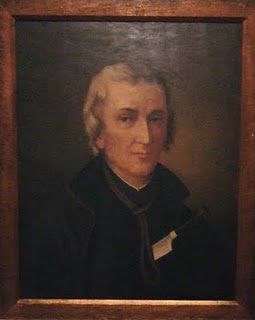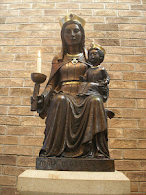John Arnold, of Llanvihangel Court, was born in 1634. He led the Whig and ultra-Protestant faction in Monmouthshire against the Tory and moderate-Protestant Marquis of Worcester, Henry Herbert. In 1677, at Worcester’s instigation, Arnold was removed from the Commission of the Peace for misbehaviour in office. He was also dismissed as Commander of the horse in the county Militia – an appointment that was in the gift of Worcester as Lord Lieutenant. At one time, Arnold had seemed sympathetic to Catholics and he appeared to be a friend of the Jesuit, Fr David Lewis. It is said by some that he had even provided a room in the Skirrid Mountain Inn for use as a Catholic chapel! Worcester, though a Protestant, had Catholic relatives, friends and sympathies. Whether Arnold’s fanatical anti-Catholicism originated as opposition to Worcester or had other causes, we may never know, but he did indeed become a dangerous enemy and an uncompromising persecutor of Catholics. He was notorious as the chief instrument in enforcing the full weight of the Penal Laws against Catholics.

In 1670, John Arnold and John Scudamore informed the House of Lords that “at Llantarnam, an eminent papist’s house in Monmouthshire, there is a room fitted up chapel wise for saying Mass where Fr David Lewis, a popish priest, hath said Mass for many years past” and that there were still six Jesuit priests at the Cwm which “had been a shelter for such popish priests near forty years”. These reports led to the eventual arrest of the priests at the Cwm and the seizure of two thirds of the lands of all lay Catholics. There was still sufficient support among local magistrates to prevent these urgent orders being obeyed and nothing was done. Arnold and Scudamore tried again! In 1678, they laid new information before Parliament of “several popish priests and the persons that do countenance them in the county of Monmouth". Arnold’s anti-Catholic campaign had been under way for some time when the King, Charles II, was informed of details of an alleged Jesuit plot to kill him and place his Catholic brother, James, Duke of York, on the throne. The King was sceptical but he referred it to the Privy Council and the plotters, Titus Oates and Israel Tonge, appeared before the council. In October, the body of Sir Edmund Berry Godfrey, the London Magistrate investigating the Plot, was found on Primrose Hill. His death is a mystery, but it generated a wave of national hysteria and paranoia which was exploited by the enemies of Catholicism and of the tolerant Protestant King. The Government offered a reward of £20 for the capture of any priest. To this, John Arnold added the huge sum of £200 from his own pocket. Such was his hatred of Catholics!
On 20th November 1678, the King, under pressure, reluctantly issued a proclamation for the immediate arrest of all priests and Jesuits, who were to be imprisoned “in order to their trial”. Fr David Lewis was one of the many priests who were arrested, tried, convicted of the treason of being Catholic priests and saying Mass, and sentenced to be hanged, drawn and quartered. However, on the King’s instructions, the executions were halted until further orders. Charles delayed signing the death warrants in the hope that the Plot would blow over but he was eventually forced into a corner and on 11th July 1679, Parliament issued an order that the Judges were to confirm the death sentences and see that they were carried out. The High Sheriff, James Herbert, who had shown himself a friend to Fr Lewis, delayed his execution for three months in the hope that the King, who knew the Plot to be untrue, would grant a reprieve. The merciless John Arnold put an end to it. He went to Lord Shaftsbury and got a warrant for the immediate execution of Fr David Lewis and a fine for the obstinate Sheriff! Fr David Lewis was martyred at Usk on 27th August 1679.
The search for fresh evidence continued but the Plot was beginni
By 1681, Arnold’s mental state was questionable and he was assaulting strangers in the street and accusing all and sundry of popery. This didn’t prevent him from being re-elected for Monmouth that year. In 1684 he was successfully sued by the Duke of Beaufort for Scandalum Magnatum, libel against a peer. He was fined £10,000 but, unable to pay, he was imprisoned for several years. After his release, he was again re-elected to Parliament. Although his influence was declining, his Parliamentary career continued until 1698. He maintained his contact with Oates and continued his anti-Catholic campaign. He died in 1703 and, after his death, his heir, a Nicholas Arnold, sold Llanvihangel Court. John Arnold’s fanaticism and hatred of Catholics and those who tolerated Catholicism had caused untold suffering and the deaths of many innocent people, including the last Welsh martyr, St David Lewis.








.JPG)

.JPG)





No comments:
Post a Comment